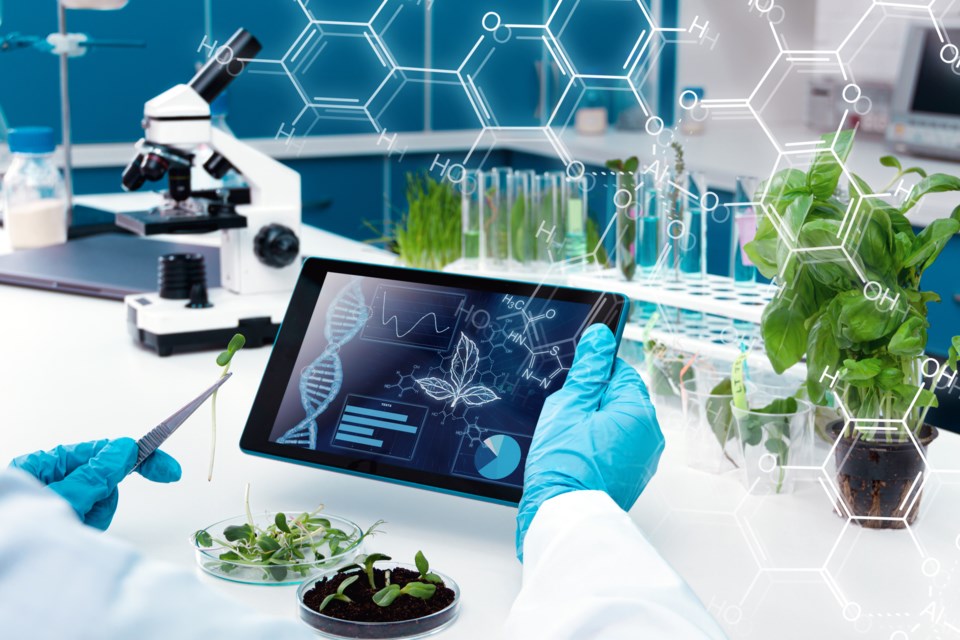Agriculture Canada scientists have, historically, spent their time on things like improving yields, crop diseases and livestock feed efficiency.
Mostly ag production and risks to production.
Now, their top priorities should be sustainable agriculture and climate change, said Agriculture Canada’s Strategic Plan for Science, a document released last fall.
“In an increasingly complex and intertwined world, we must be deliberate in our actions to address the needs of producers, the industry, Canadians, and citizens around the globe. Everything we do is interconnected,” it said.
“Now more than ever, sustainability is — and will remain — a key driver of innovation in the face of mounting environmental challenges. With the climate crisis looming, research on incremental productivity gains will not protect the industry from the volatility of a changing environment. An effective response will require a paradigm shift.”
The strategic plan said the old scientific priorities are no longer sufficient.
Those objectives were:
• Increasing agricultural productivity
• Improving environmental performance
• Improving attributes for food and non-food uses
• Addressing threats to the agriculture and agri-food value chain
The new missions for scientists are:
• Mitigating and adapting to climate change
• Increasing the resiliency of agro-ecosystems
• Advancing the circular economy by developing value-added opportunities
• Accelerating the digital transformation of agriculture and agri-food
“A shift toward the sustainable agriculture paradigm will promote a systems approach in which productivity, environmental performance, and resilience are central to the scientific questions the department is contributing to solving,” the strategy stated.
A spokesperson for Canada’s agriculture minister Marie-Claude Bibeau, said the change in the science strategy came from department leaders at Agriculture Canada, including Gilles Saindon, assistant deputy minister for the science and technology branch.
In an interview, Saindon said the shift in priorities was based on the Sustainable Canadian Agricultural Partnership, a five-year funding agreement between federal and provincial governments, which came together last summer and takes effect April 1.
Ag Canada didn’t consult directly with farm groups or ag sector leaders before changing its scientific priorities.
“The input was largely our staff…. We had scientists from across the country that helped us,” he said. “All of this was informed with a lot of the discussion and consultations (that) was done as part of the (new) policy framework. We didn’t duplicate with a separate set of consultations. We just like tagged along and used the input that the department received… during the development of the framework (the Sustainable Canadian Agricultural Partnership).”
The strategic plan for science was unveiled a few months ago, so most Ag Canada researchers are trying to understand how it will affect their work.
For one, Saindon is asking scientists to collaborate more with other researchers. A group effort is needed to help solve the environmental and production problems within agriculture and the bigger issues facing society.
“We want to make sure we’re all pulling in the same direction…. You have to look in terms of a system. You can’t really look at a single crop, a single commodity,” he said. “We would like people to come together as teams. Not the single science project, but really multi scientist project (maybe) across the landscape.”
As well, when scientists write a funding proposal, they will be expected to frame their research “as to how they’re going to help us make a difference in these overall missions,” Saindon said.
“This is not just something for people working in climate change research… or soil and carbon cycles. It’s way beyond this. It’s the business of everyone in the branch.”
The strategic plan for science includes a brief history of Ag Canada research stations and how the scientific purpose was to “make ag production more reliable… and bolster on farm production.”
Those scientific goals evolved.
The latest strategy said Ag Canada scientists should consider goals that are bigger than agriculture and food production.
To borrow a phrase from the strategy, they should focus their research on “grand challenges.”
“In the interest of the public good… government researchers around the world, are starting to shift their focus to broad, cross-sectoral issues (otherwise known as grand challenges), including tackling climate change, increasing food security, and becoming more resilient in the face of increasingly complex risk pathways. This evolution will also require the department to reinforce the public good role by emphasizing… public good agricultural research.”
Saindon noted that a shift in scientific goals cannot sacrifice profitability in the ag sector.
Ag Canada scientists will continue to provide practical solutions for the ag industry and farmers.
“They’re more sustainable solutions. More resilient solutions. And solutions that would be less hungry on resources,” he said.
“You cannot get into a climate solution by having something so drastic that you basically have no production system. We have to be imaginative in how we do this…. We have to do something much more holistic.”



